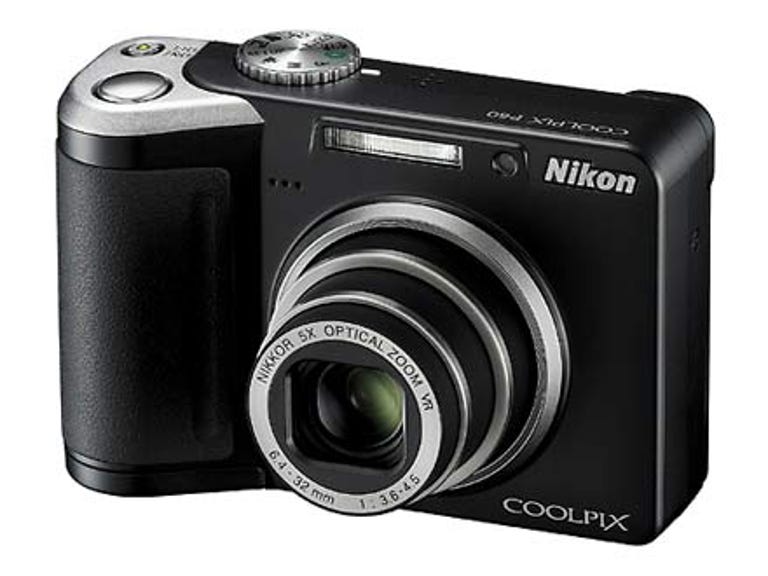 Why You Can Trust CNET
Why You Can Trust CNET Nikon Coolpix P60 review: Nikon Coolpix P60
Do you miss the days when cameras looked like cameras instead of flashy, new-fangled machines? Enter the Nikon Coolpix P60, a compact that makes retro styling cool again. A solid point-and-shoot, it strikes a balance of basic tweakability with general simplicity
Remember when cameras looked like cameras? The Nikon Coolpix P60 harks back to those days. It boasts 8 megapixels and is available now for a perfectly reasonable £160, but is its style too old school?
The Good
The Bad
The Bottom Line
Design
The P60's boxy, retro styling looks like a camera should. There's none of your new-fangled, fancy slidey parts or garish colour: it's a black box with silver accents and a rubber grip for the right hand. The controls are nicely uncluttered and the type is large enough to read. Whether you think it's classic or staid and rustic is up to you.
Power comes from two convenient AA batteries, which are easily replaced. The mode dial gives access to portrait and landscape scene modes with more options available via the menus. It also features a setup position to access the more involved options that require adjustment less frequently, such as the date and time. This frees the menu button for quick access to commonly-used shooting options.
At the back of the camera is a 64mm (2.5-inch) LCD monitor. The zoom is controlled by a flat zoom rocker switch. This one is even flatter and more wobbly and lifeless than most.
We're not sold on the placement of the viewfinder in the top left corner. Holding the viewfinder to your right eye avoids squashed nose and greasy screen issues, but essentially the electronic viewfinder is too small. Unless you have the camera eyelash-brushingly close to your eye, there's distracting peripheral vision. The placement of our left hand took some getting used to as well.
On a similar note, the flash is badly-placed for red eye, squatting directly over the lens.
Features
The P60 strikes a balance of basic tweakability with general simplicity.
The headline feature is a 5x Nikkor optical zoom lens. The 35mm equivalent is 36-180mm, which isn't anything to shout about in the wide-angle stakes. Still, a long zoom is handy for head-and- shoulders portraits.
Optical image stabilisation is always welcome. A high ISO 2,000 option is less welcome and it's not worth using as noise speckles ruin images at that ISO speed.
Manual control is also welcome, even if it's as limited as this. You can only set a minimum and maximum aperture, but you can choose from a range of shutter speeds between 1/1200 seconds and 8 seconds. There is a program mode, but strangely no aperture or shutter priority.
Performance
Exposures are well judged, although there's a tendency to blow out highlights. The option to tweak manual control proved useful in lower light or high contrast situations such as skylines. There was some purple fringing in evidence on high contrast areas, but only really noticeable when zooming in on the computer screen.

The longer zoom did lead to some barrel distortion. This means that at the wide angle, the images appear to curve slightly at the edges. Again, it's not too intrusive unless you're photographing regular patterns like brick walls.
Colour is natural and the camera produces warm portraits. Noise performance is pretty standard: ISO 400 shows noise speckles, but is still fine for smaller prints. As always, it's worth limiting the maximum ISO setting going into low-light conditions so the camera doesn't leap straight to the maximum and ruin a night's pictures.
Conclusion
The Nikon Coolpix P60 is a solid point-and-shoot. It's not the smallest, the fastest or the sexiest camera and if you want a longer zoom compact, the Sony Cyber-shot DSC-W170 is much racier. But if the Mr Average styling is your cup of Horlicks, you won't be disappointed with the P60's workman-like performance.
Edited by Shannon Doubleday


